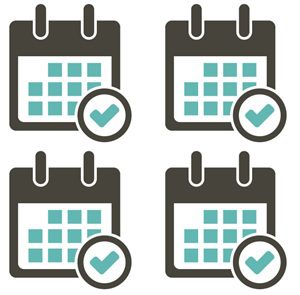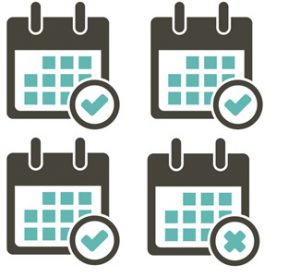fundraising
Monthly Giving: Set It And Forget It?
 Recurring giving has become a hot topic in American higher education in the past few years, with suggestions that we catch up to our non-profit and international peers who have been successfully securing recurring gifts for years. Adding to the buzz, Network for Good has just announced a series of $10,000 prizes for the best charity recurring giving campaigns.
Recurring giving has become a hot topic in American higher education in the past few years, with suggestions that we catch up to our non-profit and international peers who have been successfully securing recurring gifts for years. Adding to the buzz, Network for Good has just announced a series of $10,000 prizes for the best charity recurring giving campaigns.
Why consider building a group of “sustaining” givers?
Donors who give multiple gifts in a single year not only give more total dollars than one-time donors, they also renew their support at higher rates. The idea of recruiting a group of donors who agree to give “forever” sure sounds great.
Recurring giving has great potential, but it’s not a magic bullet that will instantly lower your costs in both time and resources to secure donations. Here are a few considerations as you set up a recurring giving program that works for your institution and your donors.
Logistics
You’ve added a monthly giving option to your pledge card, your online giving site, and your phonathon software, and you have a way to process the recurring gifts. You’re good to go, right? Sure, until the first card is declined. It’s critical to have a system in place for updating credit card information when cards expire or are declined. Every time there’s a national security breach like the Home Depot and Target incidents in 2014, non-profits see a slew of failed recurring gifts. Make sure you determine how to report on your recurring gifts, who is responsible for following up with donors, and how to update the credit card information with your payment processor. You may not have to contact your recurring donors to renew their support, but someone will need to be responsible for “donor recovery” when the card is declined.
Stewardship and Recognition
Monthly, quarterly, and semi-annual donors can slip through the cracks of a stewardship system that is only used to thank annual donors. First and foremost, be certain that you can suppress receipts for a monthly donor and send them meaningful acknowledgements. A receipt for the first gift plus summaries at calendar and fiscal year end are enough for most donors.
It’s also important to be aware of the total value of the gift. A $1,000 donor will easily be identified for membership in your leadership society, but a monthly gift of $83.33 might not be on anyone’s radar. Your pledge system and creative use of appeal codes may be an option to accomplish this. Whenever you can, recognize your recurring donors for the full value of their commitment. Recognition is free, don’t be stingy with it!
Help Sustaining Donors Feel Special
Sustaining donors are all leadership donors. They are doing something different than other one-time donors by making your cause part of their ongoing regular giving. Treat this as something special. Several authors have suggested creating a sustaining donor welcome kit and following up via the phone. Or, you might consider a special giving society like the Sundial Circle at Bowdoin College. Make sure that a recurring gift commitment doesn’t take a donor off your map. Stay in touch with your recurring donors –these donors are excellent options for brief and impactful gift officer visits. You might be able to re-brand some of your communications and send them early to recurring givers, right after you inform your top level leadership donors. If you treat a recurring gift like a leadership pledge, you will see greater dollars and donor engagement.
Renewals and Upgrades
The biggest risk of banking a group of sustaining donors is that you will forget about them. Besides forgetting to thank them like other leadership donors, you might lose out on an opportunity to seek an upgrade from a donor who has had a great experience. This will be different for each institution and depend on the donor level, but consider creating a calling pool or special mailing for sustaining donors once you have a group established to ask them to increase the amount of their recurring gift. I’d suggest politely asking for an increase every 18 months to 3 years. That strategy is very common in the UK, where monthly giving is the norm for university givers.
Ready to take the challenge?
Once you have your plan in place, consider making a recurring gift your first ask with a portion of your prospect base. In a test at my former institution, Rensselaer Polytechnic Institute, young alumni non-donors who were asked for recurring gifts via phone had a larger average gift than those who were asked for a one-time gift – even if they chose to make a one-time gift. And according to Network for Good and Achieve, over 50% of Millennials said they were interested in recurring giving.
As you can probably tell, great recurring giving programs are not using a “set it and forget it” technology. Sustaining donors may require a similar investment in time and money, but the long-term payoff has the potential to be tremendous.
So, get started on recurring giving, but make sure you have a plan that makes things easy on your staff and gives your donors the best possible experience.